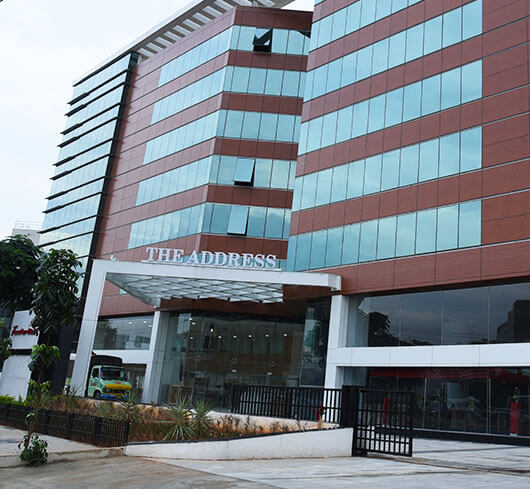|
Listen to this story
|
Condolences and tributes have poured in for the former Tata Group chairman Cyrus Mistry since his passing in a freak car accident on September 4, 2022. The sixth and youngest chairman to lead the conglomerate, Mistry was appointed deputy chairman in 2011 and then went to become chairman in December 2012. The camera-shy Mistry’s stint was cut short by a coup in October 2016. The shocked Mistry was left battling a lengthy legal case which was eventually handed over in favour of Ratan Tata this year.
Despite the fact that Mistry led the group only for four brief years, Mistry brought in internal change that would change the organisation’s face eventually. He was prescient enough to recognise the power of analytics then, and pushed Tata Group’s digital agenda. In an interview in 2016, which was posted on the company website, Mistry said that he believed tapping into digital power play was the way to build the group’s ‘next 150 years’. In the same interview, Mistry spoke about how ‘design and technology’ were his ‘special love’ because it created ‘an anticipation of creating something entirely new’ and had the ‘potential it has to improve lives’.
While his career was marked by the shock exit and the mud slinging that followed, much needs to be said for Mistry’s contribution to the group and AI/ML innovation in India.

Bringing digital innovation at the forefront
Mistry’s emphasis on technological innovation became imminent a couple of years after he took over. The conglomerate had an innovation group called Tata Group Innovation Forum (TGIF) that was almost a decade-old but Mistry wanted to streamline the process across all its companies. In June 2014, he set up the Group Technology and Innovation Office or GTIO which became an umbrella for all group-level innovation programmes like Innovista. Held every year by the Tata Group Innovation Forum or TGIF, Innovista encouraged a culture of innovation and piloting new designs by recognising them within the company. Mistry even altered the Tata Business Excellence Model or TBEM slightly to include detailed technology and innovation checklists as a part of the assessments that would be conducted.
Mistry wanted the ideals for reinvention to seep in within the company’s leadership across all levels. The training programme for entry and mid-level managers now would include innovation in an integral way. A programme called Tata Innovation Edge was started for top executives so that they could brainstorm disruptive ideas in their businesses.
In a first, a Group Chief Technology Officer was appointed. Dr. Gopichand Katragadda who helmed the role first had stated that his role was to raise the “innovation quotient across the entire group”. Katragadda was to stay in zones between different businesses so that he could see the big picture and spot new ideas that would be impactful globally. Mistry placed his faith in the Group CTO who he believed would cinch things together. It is said that he challenged the Group CTO office to pull the ranks of the Tata Group within the top 10 most technologically innovative companies globally.
And innovate the GTIO did—it brought in a smart watch for industrial workers, a drone-based pesticide spraying system, an analytics system came up for the factory and fleet and a new energy project based on graphene and fuel cells. Dr. Katragadda then would sketch out the multiple go-to-market strategies for these technologies, and there could be many. Either it could enter the market through a different company as a single product or a set of products or it could go via Tata Industries which would act as a business incubator. Or, it could even be entirely independent as a completely new business. The fact that a change in the stagnant culture helped actual viable businesses spring up is a testament to Mistry’s success. The drone-based service was eventually merged with Tata Group’s agricultural product company, Rallis India.

Setting up analytics arm
In September 2015, Mistry also formed a new analytics arm called Tata Consumer Analytics Division or TCAD, under the new division of Tata Industries Ltd. Mistry wanted data analytics to be at the company’s forefront and wanted TCAD to help all of the different companies under the Tata Group to make better sense of data. Deep Thomas, the former Citibank North America executive, was chosen to head this 40-member body.
Prominent projects using analytics
Another analytics initiative, Tata iQ, that continues to thrive, began under the helm of Mistry in April 2015. The seven-year old startup, Tata Insights and Quants (‘Tata iQ’), was incubated under Tata Industries Limited and offers advanced analytics and data engineering solutions across industries. Methods like predictive analytics that are commonly used now popped up then in Tata iQ to Mistry’s credit. Since then, Tata iQ is well on its way to become its own thing. As recently as September last year, Tata iQ has started using graph technology in HR analytics.
One of Mistry’s pet digital projects that he heavily banked on was Tata Cliq. The Indian e-commerce brand used Tata iQ, which was the group’s big play in data. The company was using data analytics to understand consumers better and gauge their moods and buying habits.

Academic partnerships
Mistry also wanted to form strategic tie-ups with academia to bridge the gap between formal education and corporate workings and develop breakthrough technologies. In August, 2016, the Group also announced a bunch of new partnerships with a number of prestigious academic institutions in India and abroad like Harvard, Yale, Indian Institute of Technology Madras and the Royal Society, UK.
In another instance of academic collaboration, in June 2015, Mistry laid the foundation stone for a TCS research centre on Intelligent Systems at IIIT-Hyderabad. Named after the former deputy chairman of TCS, the proposed facility was to work on areas that weren’t as prominent then as they are now, like robotics, natural language processing and cognitive learning.











































































